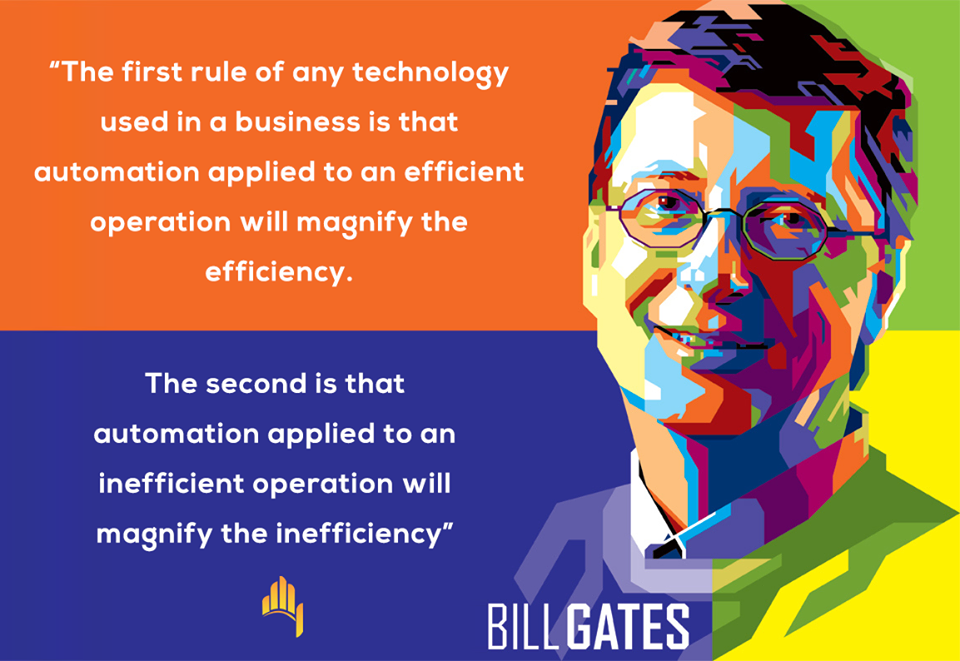How the world of machine learning will not help you unless you first discover what you want to do in analog.
If you’ve heard me give a talk about Powering Up Your Work processes, then you’ve heard me say this – you need to first figure out your systems in analog before you even think about digitizing.
This is because we live in an analog world. In the analog world, there is an infinite amount of tones to hear, smells to smell, colors to paint, directions to go, thoughts to have, decisions to make. Our world in analog mode is filled with infinite possibilities.
When you decide to digitize a system or “automate” your processes by building algorithms, what you are probably trying to do is create barriers for any errors or redundancy to occur. The reason you need to know your analog process first is you need to know what to digitize and see if it even works before you build walls around it.
Otherwise, like Bill Gates says, “it’s garbage in, garbage out!”

That’s why before creatives like Disney start developing a new movie they create storyboards. Same goes with magazine layouts, scripts, you get the point. You have to see how it works before you spend time creating barriers.
In the digital side of work, all the actions and systems you experience are in the realm of the discrete or finite, meaning there is a limited set of values they can be.
In it’s simplest form the definition is:
Analog = something physical with continuous change.
Digital = made of numbers.
This is why we code. Digital pictures, music, videos, processes, etc are actually stored on your device as numbers.
Discrete numbers (101111000110) versus Infinite wavelengths.
I could go on and on about this, but the main thing to remember is that you need to think analog before you delve into digitizing your work processes.
Digital may be seen as an improvement of systems, but remember Bill Gates’ wisdom. You have to understand fully what you are digitizing in order for the desired automatic functionality to work.
Machine Learning and Artificial Intelligence are the new buzz words of digital work. Currently, in most digital systems today, we (humans) are the users (operators). We give the inputs, and unless we are intelligent enough to make changes to the system dynamically as we see flaws and areas of improvement, the system will only function to the level it was built.
To build a smarter digital system, you can now incorporate what’s known as Machine Learning. After doing this, the product you create is known as an Artificially Intelligent system (AI).
Here is a simple path you can in order to understand how to do your work efficiently:
- Discover: Identify what you want to do.
- Model: Investigate how others do it, to refine and get ideas.
- Automate: First in Analog then Digital
- Analog first to develop the algorithms: Create checklists, flowcharts, whiteboards, etc.
- Digital: Use various technologies to automate your algorithms. You may even find that some processes cannot be digitized. Like your creative work. There is no machine that will sing your song, or paint your picture. You cannot outsource creativity.
- Use AIs: Create shortcuts by using AIs to get more work done faster and more efficiently.

What are your thoughts on this? How are you automating your processes in order to have more time to be creative?
Here’s to cheering on your amazing work!
#PowerUpWork
SOURCE: https://www.powerupwork.org/posts/analog-versus-digital-work
